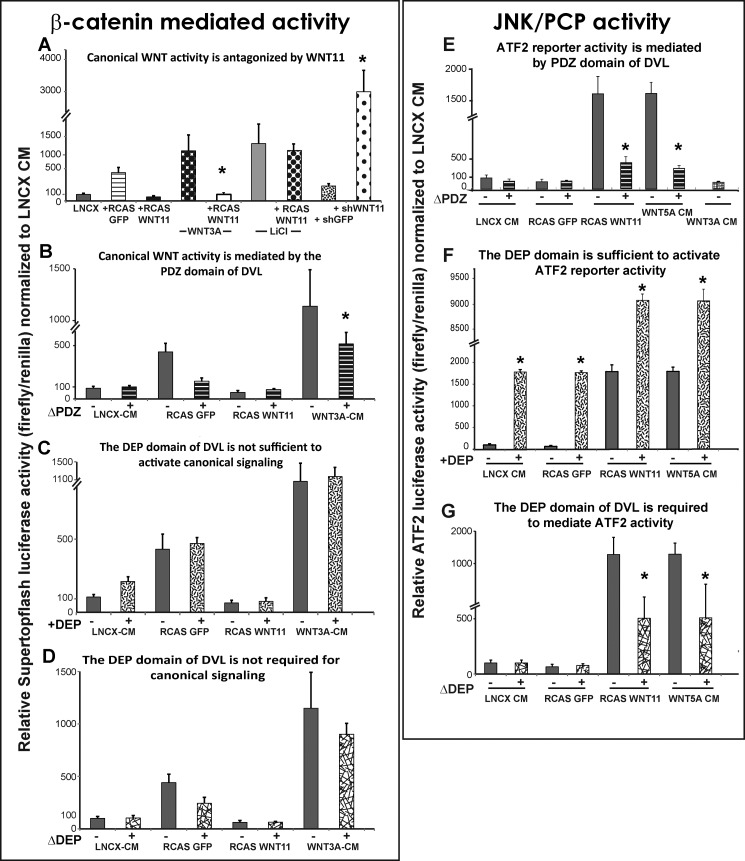FIGURE 5.
Reporter quantification of WNT activity in maxillary mesenchyme. Data are represented as means of seven replicates and error bars = 1 S.D. All data were normalized to LNCX values. Data comparisons between conditions were made using ANOVA followed by Tukey's post hoc testing. Wnt3a, Wnt5a, and LNCX were added as conditioned media. GFP and WNT11 treatments involved pre-infecting maxillary mesenchyme with the relevant viruses at stage 16 followed by isolation of the virus-infected mesenchyme from stage 24 embryos. Plasmids containing shWNT11, shGFP, the luciferase reporters, or the DVL variants were transfected at the time of plating. A, exogenous WNT11 blocked activation of Super Topflash by Wnt3a-conditioned media but not by LiCl. Knockdown with shWNT11 derepressed the endogenous gene and activated the reporter. B, DVL-ΔPDZ reduced Super Topflash activity induced by Wnt3a-CM as expected. C, DEP domain fails to activate the reporter. D, removal of the DEP domain has no effect on β-catenin-mediated activity. E, WNT11 and Wnt5a activated the ATF2 reporter by 15-fold relative to the controls. The addition of DVL-ΔPDZ blocked the activation of the ATF2-reporter by WNT11 and Wnt5a. F, isolated DEP domain is sufficient on its own to activate ATF2 to similar levels produced by WNT11 or Wnt5a-CM. The DEP domain combined with WNT11 or Wnt5a-CM results in a massive synergistic effect on the level of ATF2 luciferase activity. G, DVL-ΔDEP dampens activation of the ATF2-luc reporter by WNT11 virus or Wnt5a-CM.

